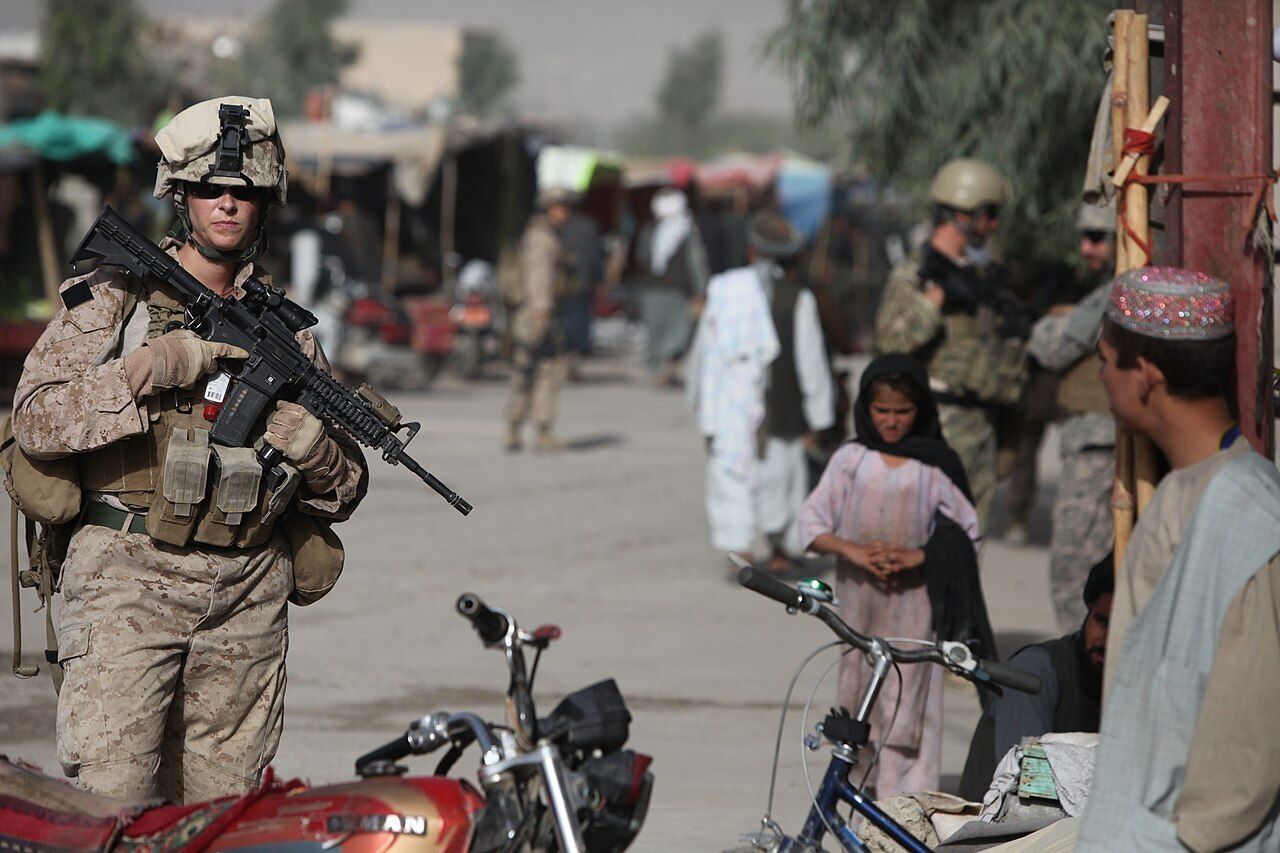
Hospital Corpsman 2nd Class Claire E. Ballante, seen here in August 2010 in Afghanistan, carries out work for the Female Engagement Team, a Naval program that used female service members to build trust and interact with local women and families in culturally sensitive areas. | Photo by United States Navy
What you probably already know: Defense Secretary Pete Hegseth recently announced new mandates aimed at ensuring every active duty combat role “returns to the highest male standard.” It’s the latest move in Hegseth’s campaign to enforce “sex-neutral standards across the Department,” which has seen the termination of the Defense Advisory Committee on Women in the Services. All combat roles will remain open to both men and women. “If women can make it, excellent. If not, it is what it is,” Hegseth said.
Why it matters: Previously, each branch of the U.S. military had its own fitness requirements and test frequency. Hegseth’s changes include daily physical training for all service members, and at least two yearly tests for combat personnel that will take into account a person’s age but not their gender. In his past work as a Fox News commentator, Hegseth said that women should not hold combat roles and insisted that the military should lower standards to accommodate more women. As of late 2024, nearly 4,800 women were serving in Army combat roles across infantry, armor and field artillery roles, while approximately 410 enlisted women held combat positions in the Marine Corps. Fewer than 10 women are Green Berets, three serve in Air Force special operations and two are Navy Special Warfare combat crew. Kelly Aeschbach, a retired Navy vice admiral, says the latter is “one of the examples where I think we are holding to a standard that has been rightly prohibitive because it requires huge physical demands.”
What it means: Aside from standardizing baseline fitness test requirements, Hegseth’s announcement mostly serves as a reinforcement, Aeschbach says. “We have standards and we want to hold people accountable to those standards. The military is representative of the population as a whole and you do need to hold yourself to a little bit higher standard when you're serving, in terms of the oath you've taken and the responsibilities that you're charged with.” Aeschbach embraces diversity on teams across all applications — not just the military — because when people with a range of strengths work together, “then the whole team is generally able to mask any weakness and you learn from each other, everybody lifts everyone else up, and I think women are a part of that.”
What happens next: Meeting recruiting goals has been a persistent struggle for the services. Aeschbach doubts that women will be barred from combat roles in the future. Doing so would require tremendous legal and federal effort, and would raise questions about whether the military could remain an all-volunteer force. “If you do that, you risk or compromise that you won't be getting the most highly qualified people,” Aeschbach says. Others fear that without women, standards would actually need to be lowered to bring in more men who currently wouldn’t meet the physical, academic or moral requirements. For now, Aeschbach is confident that current standards ensure outstanding talent is joining up — but she is concerned that there’s a growing perception that the military is not a welcoming place for women. “When the reality is, at least when I served, I had a tremendously positive experience,” she says. “One of the reasons I served for as long as I did was because I felt like I was embraced and afforded an opportunity based on my demonstrated credibility and capability.”
— Story by Cambrie Juarez
[email protected]



